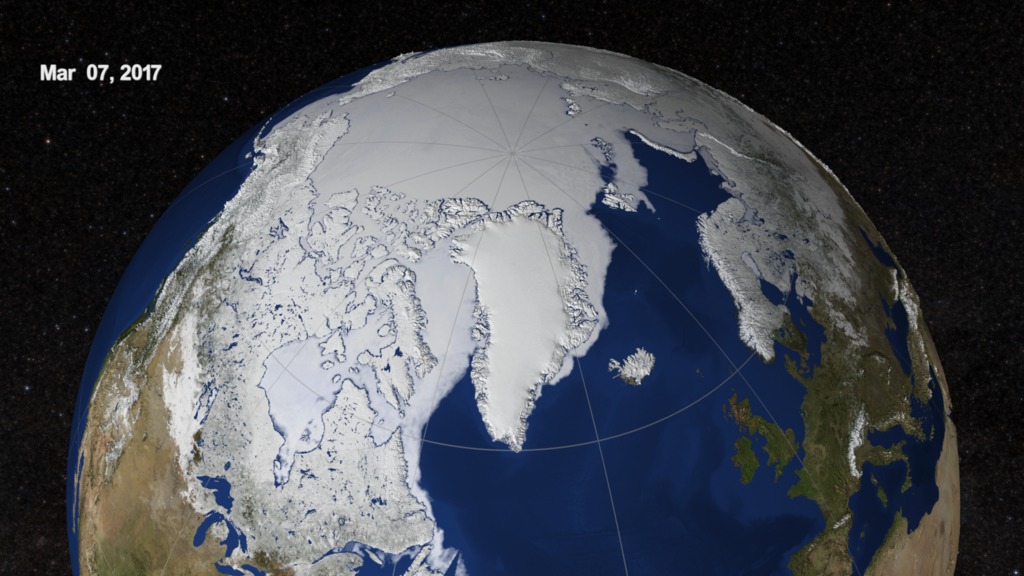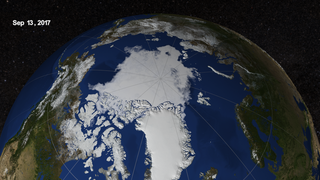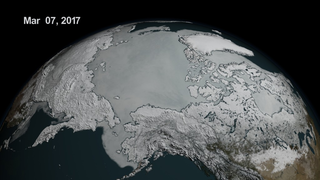Earth
ID: 12734

Arctic sea ice, the layer of frozen seawater covering much of the Arctic Ocean and neighboring seas, is often referred to as the planet’s air conditioner: its white surface bounces solar energy back to space, cooling the globe. The sea ice cap changes with the season, growing in the autumn and winter and shrinking in the spring and summer. Its minimum summertime extent, which typically occurs in September, has been decreasing, overall, at a rapid pace since the late 1970s due to warming temperatures. Arctic sea ice appeared to have reached its yearly lowest extent on Sept. 13, according to NASA and the NASA-supported National Snow and Ice Data Center (NSIDC) at the University of Colorado Boulder. Analysis of satellite data by NSIDC and NASA showed that at 1.79 million square miles (4.64 million square kilometers), this year’s Arctic sea ice minimum extent is the eighth lowest in the consistent long-term satellite record, which began in 1978. Watch the video to see the receding sea ice.


Arctic Update



Source Material
Related Story
For More Information
Story Credits
Lead Visualizer/Animator:
Helen-Nicole Kostis (USRA)
Visualizer/Animator:
Cindy Starr (Global Science and Technology, Inc.)
Lead Producer:
Jefferson Beck (USRA)
Lead Scientist:
Claire Parkinson (NASA/GSFC)
Lead Writer:
Maria-Jose Vinas Garcia (Telophase)
Helen-Nicole Kostis (USRA)
Visualizer/Animator:
Cindy Starr (Global Science and Technology, Inc.)
Lead Producer:
Jefferson Beck (USRA)
Lead Scientist:
Claire Parkinson (NASA/GSFC)
Lead Writer:
Maria-Jose Vinas Garcia (Telophase)
Please give credit for this item to:
NASA's Scientific Visualization Studio
NASA's Scientific Visualization Studio
Short URL to share this page:
https://svs.gsfc.nasa.gov/12734
Keywords:
SVS >> HDTV
SVS >> App
NASA Science >> Earth
https://svs.gsfc.nasa.gov/12734
Keywords:
SVS >> HDTV
SVS >> App
NASA Science >> Earth









